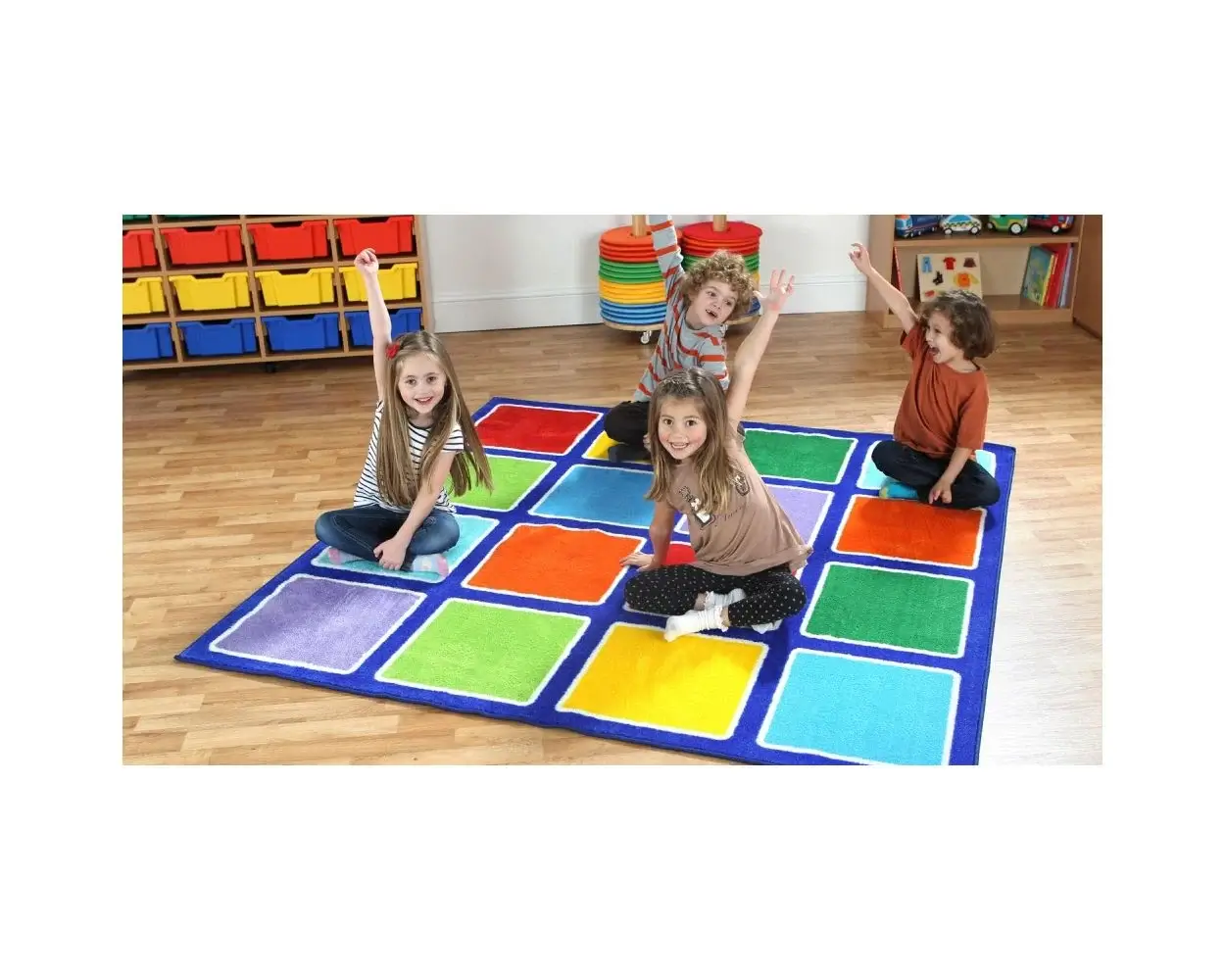The importance of creating an optimal learning environment.
Here at CostCuttersUK, we understand the significance of creating an optimal learning environment for students. A space that is conducive to learning can greatly enhance student engagement and focus. One often overlooked tool that can contribute to this is the use of classroom mats. Classroom mats, school mats, classroom rugs and classroom carpets, provide several benefits that can greatly impact the learning experience.
How classroom mats enhance student engagement.
Classroom mats play a crucial role in enhancing student engagement. The use of visually appealing and interactive mats can capture students’ attention and make learning more enjoyable. For example, educational rugs with vibrant colours and engaging designs can stimulate curiosity and encourage exploration. When students are actively engaged with their learning environment, they are more likely to be attentive and motivated to participate in classroom activities.
Furthermore, mats can also provide a comfortable and safe space for students to work and collaborate. Whether it’s during group discussions or individual assignments, having a designated areas with a soft surface can create a sense of comfort and belonging. This can promote positive associations with the learning environment and foster a sense of community within the classroom.
Benefits of using a classroom mats in the classroom.
The use of classroom mats offers numerous benefits in the learning environment. Firstly, they can help define different areas within the classroom. By using different of mats, such as classroom rugs or classroom carpets, educators can create distinct spaces activities. For example, a reading corner can be marked with a cosy rug, while a science experiment area can be designed with a mat that is easy to clean.
Additionally, classroom mats can also serve as educational tools. Many mats are designed with educational content, such as educational mats, floor mats, or entrance mats and play mats. These educational rugs provide a visual aid that reinforces the lesson being taught. For example, a maths lesson can be enhanced by using a rug with numbers or shapes, allowing the students to physically interact and practice their knowledge.
Another advantage of using classroom mats is their ability to absorb noise. Noise levels in the classroom can be distracting and hinder students concentration. The soft texture of mats helps to absorb sound and reduce echoes, creating a more peaceful and focused learning environment.
Type of classroom mats.
When considering classroom mats, there are various options available to suit different needs and preferences. One popular choice is The Natural World Leaf Placement Floor Carpet. A majority of our rugs will come in a variety of sizes, colours, and patterns making them versatile for different classroom setups. Classroom carpets, on the other hand, offer larger coverage and can be used to define larger areas within the classroom.
For those on a budget, we do also have some mats on promotions:
- Number 1-20 Runner Classroom Carpet
- Rainbow Numbered 1-24 Indoor or Outdoor Mat Squares with Free Holdall
- Professions Circular Carpet
Factors to consider when choosing
When selecting classroom mats there are several factors to consider. Firstly the size of the mat should be appropriate for the classroom space and the numbers of students. It’s important to ensure that the mat is large enough to accommodate students comfortably.
Additionally, the durability and quality of the mat should be taken into account. Classroom mats should be able to withstand regular use and be easy to clean. Mats made from materials such as nylon or plastic are often more durable and can withstand heavy foot traffic.
Lastly, the design and educational content of the mat should align with the curriculum and learning objectives. Consider the age group and subject matter when choosing educational rugs.
Incorporating educational rugs into lesson plans.
To fully utilize the benefits of mats, educators can incorporate them into their lesson plans. These mats can be used interactive tools during group discussions, where students can gather around and engage with the content on the rug. Additionally, mats with printed maps or diagrams can be utilised during geography or science lessons, allowing students to physically explore and interact with the subject matter.
Educators can also encourage independent learning by providing individual mats for students to concentrate and focus on their assignments. By incorporating classroom mats into lesson plans, educators can enhance student engagement and create a dynamic and interactive learning environment.
Tips for maintaining and cleaning
To ensure the longevity and cleanliness of classroom mats, it’s important to establish a regular maintenance routine. Regularly vacuuming or sweeping the mats can help remove dust and debris. For spills or stains, it’s important to address them promptly by blotting the affected area with a clean cloth or using a mild detergent solutions for more stubborn stains.
It’s also recommended to rotate the position of the mats periodically to distribute wear and tear evenly. Additionally mats should be stored properly when not in use to prevent damage or deformation.
Creating an optimal learning environment is essential for student engagement and focus. Classroom mats, such as school mats, classroom rugs, and classroom carpets, offer numerous benefits in enhancing the learning experience. They provide visually appealing and interactive spaces, define different areas within the classroom, and serve as educational tols. By considering factors such as size, durability, and educational tools. By considering factors such as size, durability, and design, educators can choose the most suitable mats for their classrooms.

